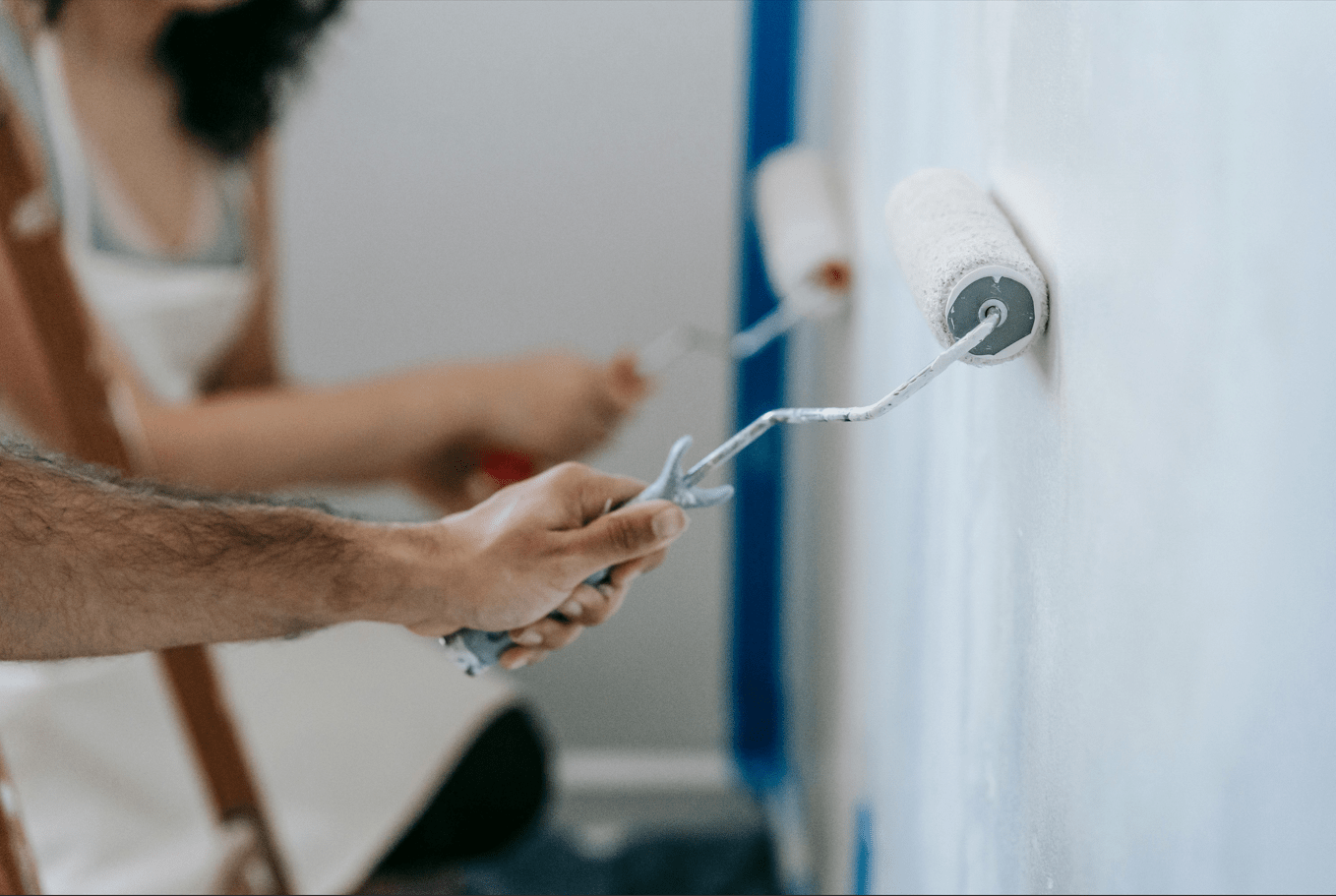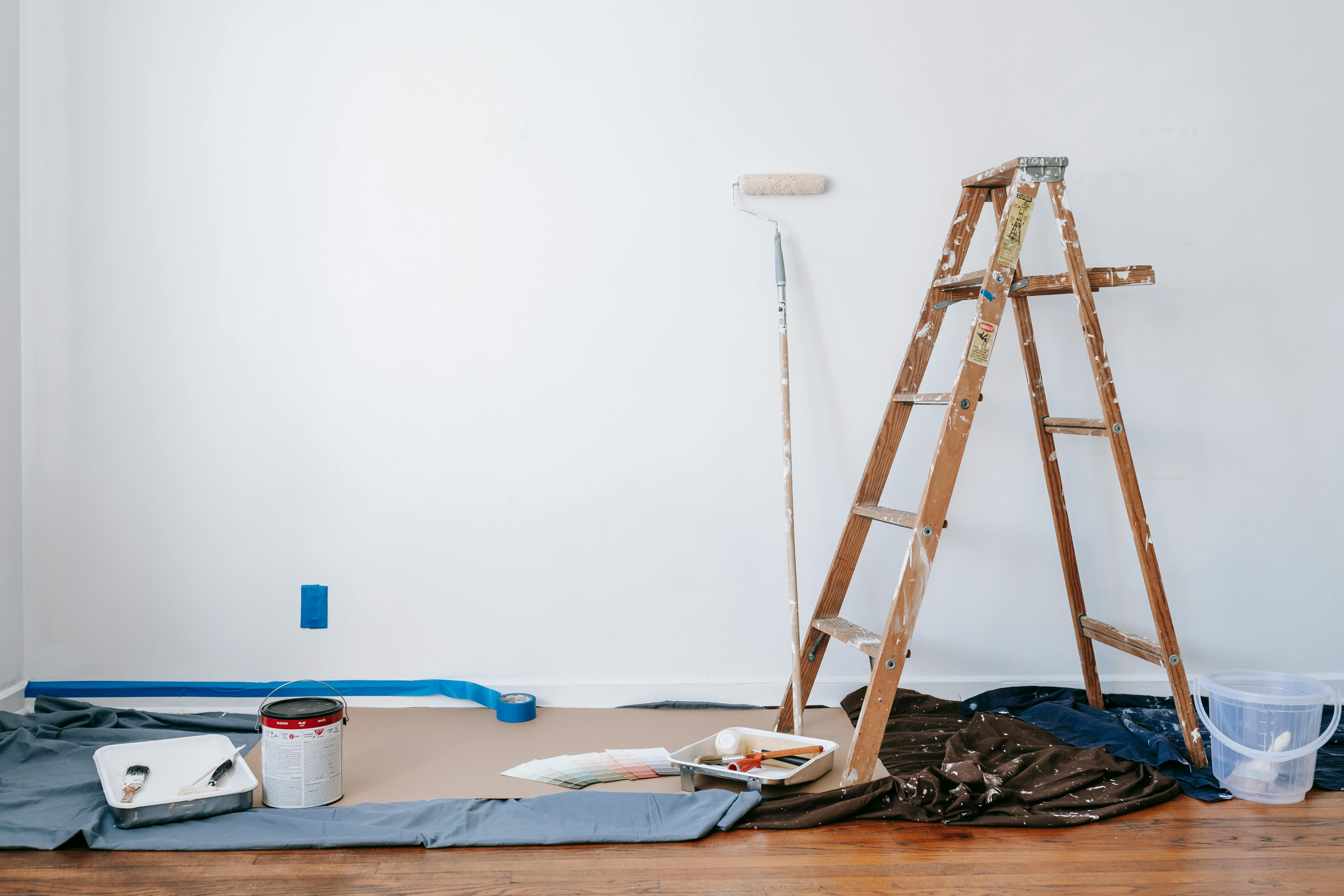
A beautifully painted wall or surface can transform a space, but without the proper preparation, your paint job might not last as long as you’d hoped. This is where paint sealant comes in.
This comprehensive guide will explain what paint sealants are, why they’re essential, and how to use them.
What is Paint Sealant?
Paint sealant creates a protective layer against dirt and moisture, thereby preventing mould growth and insect infestation. Think of it as a foundation that ensures your various types of house paint adheres properly and remains in excellent condition for years.
Sealants penetrate the surface, fill in pores, and create a smooth, uniform base for the paint to grip onto. This helps to prevent common issues like peeling, cracking, and discolouration.
Now, how does a paint sealant differ from other preparatory products, like primers and topcoats?
Knowing these differences enables you to choose the right product for each stage of your project:
- Sealant: Prepares the surface by sealing pores, stabilising it, and enhancing adhesion.
- Primer: Provides a smooth base for the paint and can help to hide imperfections.
- Topcoat: The final layer of paint that provides colour and the desired finish.
Why Use a Paint Sealant?
Paint sealants offer numerous benefits contributing to a higher-quality and more durable paint job. They are instrumental when dealing with porous or challenging surfaces.
Here are the advantages of using paint sealants:
- Improved Paint Adhesion: Paint sealers create a stable surface for the paint to bond to, thereby preventing peeling and flaking.
- Protection from Moisture and Stains: Paint sealers act as a protective barrier against moisture, keeping it from seeping into the surface and causing damage or promoting mould growth. They also help to resist stains, making it easier to keep your surfaces clean.
- Enhanced Durability: By protecting against moisture, UV rays, and other environmental factors, paint sealants help to extend the life of your paint job.
- Uniform Finish: Sealants help to create a consistent surface, which allows for a more even and professional-looking paint application.
Types of Paint Sealants
Each paint sealant type offers unique properties tailored to specific uses. Some of them include:
1. Oil-Based Sealants
Oil-based paint sealants are known for their excellent penetration and adhesion properties. They are particularly effective on rough and porous surfaces like concrete, brick, and wood. These sealers are long-lasting and provide a strong barrier against moisture.
2. Water-Based Sealants
Water-based sealants are becoming popular due to their low odour, ease of use, and eco-friendliness. They dry quickly, making them ideal for interior projects. Water-based paint sealants are easy to clean with just soap and water. While generally less durable than oil-based sealers, they are still effective for many interior applications, such as walls and ceilings.
3. Acrylic Coatings and Specialised Sealants
Acrylic-based paint sealants offer a balance of performance and ease of use. They are known for their good adhesion, alkali resistance, and flexibility. Specialised sealants are also available for specific situations, such as:
- High-alkaline Surfaces: These paint sealants are formulated to prevent efflorescence (a white, powdery deposit) on surfaces like concrete and brick.
- Efflorescence-prone Surfaces: These sealants prevent salts from migrating to the surface, which can cause paint to discolour or peel.
Benefits of Using Paint Sealants
Knowing when and how to use a paint sealant offers several benefits that can improve the quality and longevity of your paint job. Here are some of them:
Enhanced Surface Protection
Sealants prevent paint from peeling, cracking, and chipping. This is particularly important in areas exposed to moisture, temperature fluctuations, or wear and tear.
Increased Durability of Paint Jobs
By sealing the surface, you protect it from the damaging effects of environmental factors such as humidity, UV radiation, and pollution. This helps to maintain the colour and finish of your paint.
Improved Adhesion
Paint sealants provide a solid base to which the topcoat can adhere, which is essential for preventing peeling and flaking. This is especially important on porous surfaces where paint can easily soak in and lose its grip.
Mould and Algae Resistance
In areas prone to moisture, such as bathrooms and kitchens, paint sealants with anti-fungal properties can help inhibit mould and algae growth, keeping your surfaces clean and healthy.
Top Recommended Paint Sealants
Selecting a quality paint sealant can significantly affect the final result. Here are some of the most recommended options available:
- Vinilex 5170 Wall Sealer (Nippon Paint): An oil-based option for alkaline surfaces. It prevents mould growth and enhances durability.
- 5101 Odour-less Wall Sealer (Nippon Paint): This water-based sealant dries quickly, is low in odour, and has anti-fungal properties.
- Expresskote Sealer (Nippon Paint): Known for its quick-drying properties and excellent adhesion, this paint sealer with a special styrene acrylic polymer is perfect for interior use.
- Berger Plastaseal: Acrylic-based and alkali-resistant, this paint sealant is highly suitable for masonry and provides anti-carbonation protection.
- Raffles Paint R.Sealer: Free from lead, mercury, and ammonia, this ultra-low odour paint sealant formula fills pores and cracks effectively.
- Dulux Water-Based and Solvent-Based Sealers: These products offer options for both indoor and outdoor applications, with water-based variants for interiors and solvent-based for external surfaces.
Choosing the Right Paint Sealant for Your Project
When selecting a paint sealant, it’s essential to match the product to the surface and environmental conditions. Consider the following factors:
Surface Type
Different surfaces require different types of sealants. For instance, chalky or powdery walls may need a specialised sealant to enhance paint adhesion. On the other hand, new plaster might work best with a water-based sealer that dries quickly without releasing strong fumes.
Indoor vs. Outdoor Use
Sealants for outdoor use should be robust enough to withstand temperature changes, UV exposure, and rain. Indoor paint sealants can be water-based for lower odour and reduced VOCs, ideal for living areas.
Environmental Considerations
Eco-friendly paint sealants are becoming increasingly popular, particularly for interior applications. Look for low-VOC products if you’re working indoors, especially in areas with limited ventilation, to ensure a safer, greener choice.
Step-by-Step Guide to Applying Paint Sealant
Proper application of paint sealant can greatly influence the end result. Follow these steps for a professional finish:
- Surface Preparation: Remove any loose paint, dirt, grease, or rust by thoroughly cleaning the surface. Use a suitable cleaning solution, such as sugar soap, and rinse well. After that, allow the surface to dry completely before proceeding.
- Application Process
- Gather Your Tools: You’ll need a paint tray, roller, brush, and protective clothes.
- Start at the Edges: Use a brush to cut in around the edges and corners of the surface.
- Roll the Middle: Use a roller to apply the paint sealant to the larger areas, working in smooth, even strokes.
- Apply Thin Coats: Avoid applying the paint sealant too thickly, as this may lead to uneven drying and poor adhesion.
- Drying Time and Recoating: Allow the paint sealant to dry fully, depending on the type and brand, which may take a few hours. Only after it’s dry should you consider applying a second coat or proceeding with the topcoat for the best results.
Common Mistakes to Avoid When Using Paint Sealant
Avoiding common mistakes when using paint sealant can help achieve a long-lasting, quality finish. Plus, it can save you money, too.
Here are some of the most common pitfalls to be mindful of:
- Insufficient Surface Cleaning: Applying a paint sealant over dirt or dust can lead to uneven results and poor adhesion. Taking time to clean the surface properly is essential for a smooth, long-lasting finish.
- Skipping Primer When Necessary: Some surfaces still require primer paint, even if you’re using a paint sealant. For instance, highly porous surfaces may benefit from a primer to ensure better coverage and durability.
- Overapplication: Applying too much paint sealant at once can result in a thick, uneven layer. Use a consistent amount to ensure a smooth and level application.
Frequently Asked Questions About Paint Sealants
Can I use a paint sealant alone without a primer?
If you’re painting a surface that’s already in good condition and not particularly porous, a sealant alone may be sufficient. However, for best results, especially on challenging surfaces, using both a sealant and a primer is recommended.
How many coats of sealer paint are needed for optimal results?
Typically, one or two coats of sealant are sufficient for condo or HDB painting projects. However, always refer to the manufacturer’s instructions for specific recommendations.
What is the difference between a primer and a sealer?
Paint sealants are primarily used to seal the surface and improve adhesion, while a primer is designed to create a smooth base and can also help hide imperfections.
How does a sealant prevent mould and mildew?
Some paint sealants contain anti-fungal additives that inhibit the growth of mould and mildew. These sealants are particularly useful in damp environments like bathrooms and kitchens.
Can paint sealants be tinted?
Yes, some paint sealants can be tinted. This can be helpful when you want to slightly adjust the colour of the surface or create a more uniform base for your topcoat. However, remember that tinted sealants are not meant to replace your paint and will not provide the same level of colour saturation.
Do I need a specific type of sealer for humid climates?
In humid climates, choosing a sealant that offers excellent moisture resistance goes a long way in preventing moisture from penetrating the surface. Look for paint sealants specifically designed for exterior use or those that are labelled as “moisture-resistant” or “waterproof.”
Enhance and Protect Your Home with Paint Sealant
Investing in the right paint sealant can add significant value to your home by protecting surfaces and enhancing the lifespan of your paintwork. With options suited for different surfaces and conditions, there’s a paint sealant to meet every project’s unique needs.
Not sure how to use a paint sealant? You can always seek help from professional painting contractors in Singapore to get the job done for you. We at 5 Star Painting offer house and condo painting services to help you get the job done–on time and on budget.
Contact us for more information.

